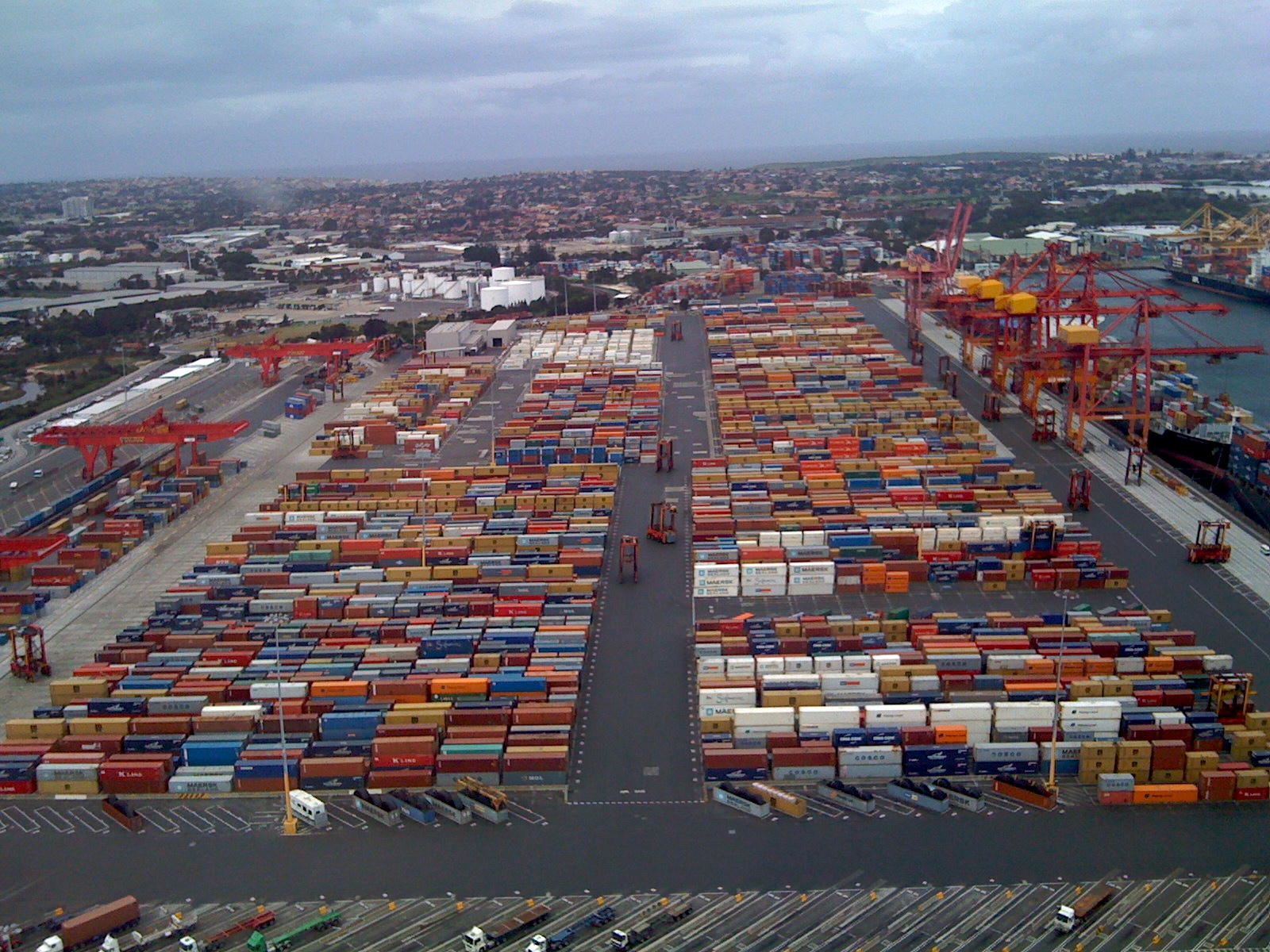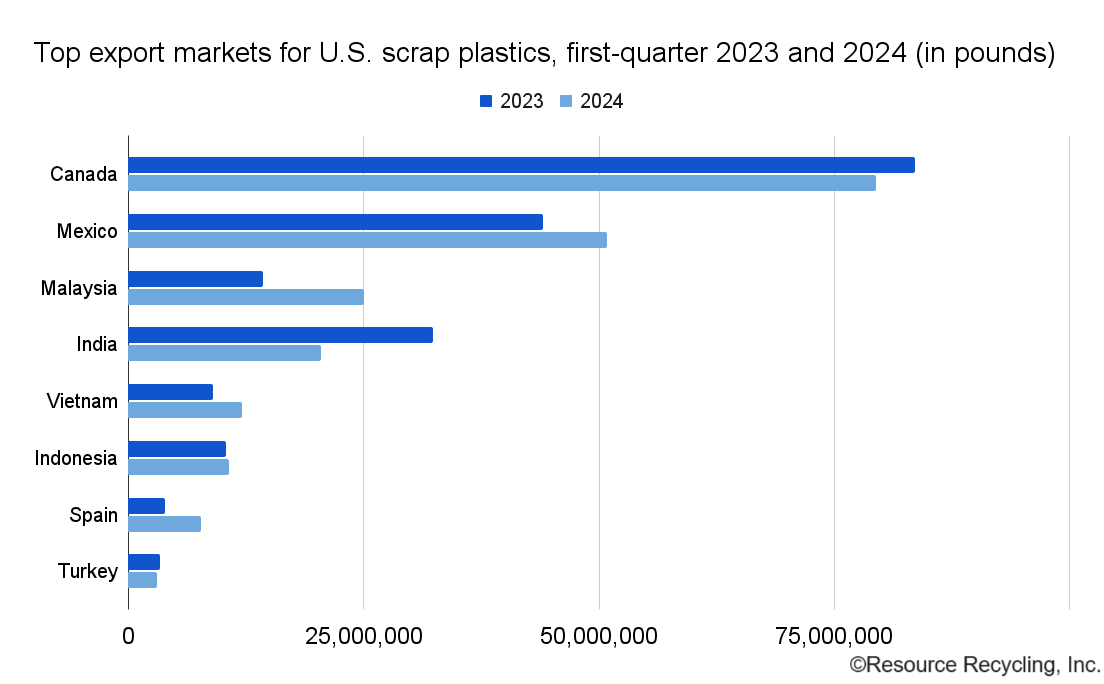
U.S. exporters shipped 234.6 million pounds of scrap plastic to other countries during the first three months of the year, on par with what was exported during the same period in 2023. | Aaron Jacobs/Shutterstock
More than half of the scrap plastic that left the U.S. in the first quarter of the year stayed in North America, recent export figures indicate.
The U.S. Census Bureau, part of the U.S. Department of Commerce, published March export data on May 2, allowing for a first-quarter export analysis.
U.S. exporters shipped 234.6 million pounds of scrap plastic to other countries during the first three months of the year, almost the exact same amount that was exported during the same period in 2023. Of the exports, 79.4 million pounds, or 34%, went to Canada, and 50.9 million pounds, or 22%, went to Mexico.
The next largest portion of material went to southeast Asia and India. Malaysia imported 25.0 million pounds of scrap plastic, India received 20.5 million pounds, Vietnam brought in 12.1 million pounds and Indonesia imported 10.7 million pounds.

Some of the exports to Southeast Asia could violate the Basel Convention, which in 2021 began regulating the shipment of mixed plastics into Basel-party countries. The U.S. is not a party to the convention, which means 191 party countries – the vast majority of nations – are prohibited from receiving regulated material, such as mixed plastic, from the U.S. There are a couple exceptions in the form of bilateral agreements between the U.S. and Canada and the U.S. and Mexico, allowing for mixed plastic trade between those countries. Those arrangements suggest why Canada and Mexico are by far the largest trading partners for scrap plastic these days.
But the exports to Malaysia, for example, raise questions.
The U.S. and Malaysia do not have a bilateral agreement that allows for U.S. exports of Basel-covered material into Malaysia. So, under Basel language, the only U.S.-to-Malaysia scrap plastic shipments that would be allowed are loads consisting of “almost exclusively” one polymer, meaning sorted loads with virtually no contamination.
Of the 25.0 million pounds of scrap plastic the U.S. shipped to Malaysia in the first quarter of 2024, 49% was classified as polyethylene, 28% was classified as PET, and 2% was classified as PVC.
The remaining 21% were classified as “other” plastics, a catch-all category that is typically how mixed plastics are classified. But it also could theoretically include clean loads of polypropylene or ABS, which would be allowed under Basel, so it’s unclear how much of that 21% is in compliance with or in violation of Basel rules.
The U.S. EPA has a detailed breakdown of how the Basel rules for scrap plastic apply to U.S. exporters, and the U.S. Department of State maintains a list of the U.S. bilateral agreements that supersede Basel.

